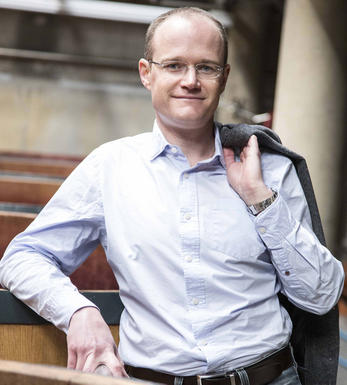
2009 Gevrey 1er Cru, Les Cazetiers, Bouchard P & Fils

Critics reviews
Christophe Bouchard and Philippe Prost, Bouchard's managing director and winemaker respectively, noted that 2009 "is not as easy to pigeon-hole as some people seem to believe. It's of course natural to believe that each vintage has a unique character and as such, it becomes easier to discuss the wines of that vintage as though they all resembled each other due to these shared characteristics. But that's not the necessarily the case with 2009 because there were, in a sense, two flowerings, one early and one late depending on the sector in question. Because of this, you could easily have surmaturité in the precocious sectors and better balanced wines, especially from an acidity standpoint in later maturing sectors. The early terroirs are almost easy with very generous and round characters whereas the late maturing terroirs are much more classic. We picked from the 7th to the 21st of September and leading up to the harvest, and then every day thereafter, we systematically visited the vineyards to decide exactly when the optimum moment to pick might be. It's rare to see such a clean crop and there was almost nothing to sort. The lack of any sorting losses contributed to the relatively generous yields even though we did a green harvest in July. We were actually worried about the yields in August because it appeared that we dropped too much fruit. Yet when we started crushing the fruit everyone was surprised by the amount of juice and this explains why the acidities were lower than we expected. In the end, we believe that our lower yields going into the final part of the growing season helped us because the lower the bunch load, the earlier that you had phenolic maturity and thus the earlier that you could pick, thus helping to preserve acidity. Even with this advantage, we did have to acidify a few wines but not much and only in red. The whites were tricky in the sense that even 24 hours was enough to pass from having enough acidity to having a deficit so you had to be especially vigilant. While it's hard to be sure, this may be due to the fact that there was a lot of sunshine in 2009, in fact 5 to 7% more than in a normal year. The skies were almost always clear and this helps to explain the high degree of phenolic ripeness. Because of this, we did a fair amount of whole cluster fermentations in the Côte de Nuits, which ranged between 20 and 50% except for the Cazetiers which was 100%. As to the wines, 2009 is riper than 2005 but it doesn't have the same solid to liquid ratio and thus the wines are not as concentrated. Despite the fact that 2009 doesn't have just one style, the classification hierarchy was well respected because unlike say 2003, each level is clearly better than the one below it. One of the interesting aspects of the vintage is how much many of the reds improved during the course of the élevage and it probably unlike the '05s, the '09s will probably not shut down in their youth. But in the end, as good as the '09s are, it's clear that it's not 2005 in red or 2008 in white. That said, we really like the quality of the tannins in '09 and believe that there will be some very special wines in time."
Allen Meadows, Burghound.com, May 06 2011
About this WINE

Bouchard Pere et Fils
The Burgundian wine domaine of Bouchard Pére et Fils can trace its origins back to 1731 though it is no longer family owned. In 1995 the Champagne house, Joseph Henriot, acquired the company and quality has risen as a consequence.
Today Bouchard is led by Stéphane Follin Arbelet while the wines are made by Philippe Prost who has been with the company since 1978. An impressive gravity-flow winery on the Route de Savigny, the Cuvérie St Vincent, was completed in 2005, enabling them, to process all their wines with optimum efficiency.
Bouchard’s total holdings comprise 130 hectares, including 12ha of grand crus and 74ha of premier crus, which makes them the largest vineyard owners in the Côte d’Or (Côte de Nuits and Côte de Beaune).
Bouchard have good holdings in the village of Monthélie, which lies just beyond Volnay and looks down over Meursault. The village is best known for its red wines, a little firmer in structure than Volnay and of particular interest in perfect summers when the grapes can ripen fully.

Pinot Noir
Pinot Noir is probably the most frustrating, and at times infuriating, wine grape in the world. However when it is successful, it can produce some of the most sublime wines known to man. This thin-skinned grape which grows in small, tight bunches performs well on well-drained, deepish limestone based subsoils as are found on Burgundy's Côte d'Or.
Pinot Noir is more susceptible than other varieties to over cropping - concentration and varietal character disappear rapidly if yields are excessive and yields as little as 25hl/ha are the norm for some climats of the Côte d`Or.
Because of the thinness of the skins, Pinot Noir wines are lighter in colour, body and tannins. However the best wines have grip, complexity and an intensity of fruit seldom found in wine from other grapes. Young Pinot Noir can smell almost sweet, redolent with freshly crushed raspberries, cherries and redcurrants. When mature, the best wines develop a sensuous, silky mouth feel with the fruit flavours deepening and gamey "sous-bois" nuances emerging.
The best examples are still found in Burgundy, although Pinot Noir`s key role in Champagne should not be forgotten. It is grown throughout the world with notable success in the Carneros and Russian River Valley districts of California, and the Martinborough and Central Otago regions of New Zealand.


Buying options
Add to wishlist
Description
The stems show on the nose as this is quite floral with a cool and ripe plum and red berry fruit nose that is distinctly sauvage in character that is also reflected by the rich, delineated and tension-filled flavors that exude a fine minerality on the balanced, austere and understated finish. This is very Cazetiers.
Christophe Bouchard and Philippe Prost, Bouchard's managing director and winemaker respectively, noted that 2009 "is not as easy to pigeon-hole as some people seem to believe. It's of course natural to believe that each vintage has a unique character and as such, it becomes easier to discuss the wines of that vintage as though they all resembled each other due to these shared characteristics. But that's not the necessarily the case with 2009 because there were, in a sense, two flowerings, one early and one late depending on the sector in question. Because of this, you could easily have surmaturité in the precocious sectors and better balanced wines, especially from an acidity standpoint in later maturing sectors. The early terroirs are almost easy with very generous and round characters whereas the late maturing terroirs are much more classic. We picked from the 7th to the 21st of September and leading up to the harvest, and then every day thereafter, we systematically visited the vineyards to decide exactly when the optimum moment to pick might be. It's rare to see such a clean crop and there was almost nothing to sort. The lack of any sorting losses contributed to the relatively generous yields even though we did a green harvest in July. We were actually worried about the yields in August because it appeared that we dropped too much fruit. Yet when we started crushing the fruit everyone was surprised by the amount of juice and this explains why the acidities were lower than we expected. In the end, we believe that our lower yields going into the final part of the growing season helped us because the lower the bunch load, the earlier that you had phenolic maturity and thus the earlier that you could pick, thus helping to preserve acidity. Even with this advantage, we did have to acidify a few wines but not much and only in red. The whites were tricky in the sense that even 24 hours was enough to pass from having enough acidity to having a deficit so you had to be especially vigilant. While it's hard to be sure, this may be due to the fact that there was a lot of sunshine in 2009, in fact 5 to 7% more than in a normal year. The skies were almost always clear and this helps to explain the high degree of phenolic ripeness. Because of this, we did a fair amount of whole cluster fermentations in the Côte de Nuits, which ranged between 20 and 50% except for the Cazetiers which was 100%. As to the wines, 2009 is riper than 2005 but it doesn't have the same solid to liquid ratio and thus the wines are not as concentrated. Despite the fact that 2009 doesn't have just one style, the classification hierarchy was well respected because unlike say 2003, each level is clearly better than the one below it. One of the interesting aspects of the vintage is how much many of the reds improved during the course of the élevage and it probably unlike the '05s, the '09s will probably not shut down in their youth. But in the end, as good as the '09s are, it's clear that it's not 2005 in red or 2008 in white. That said, we really like the quality of the tannins in '09 and believe that there will be some very special wines in time."
Allen Meadows, Burghound.com, May 06 2011
wine at a glance
Delivery and quality guarantee